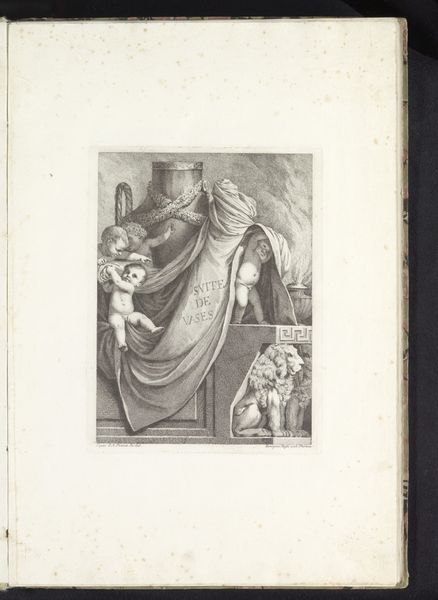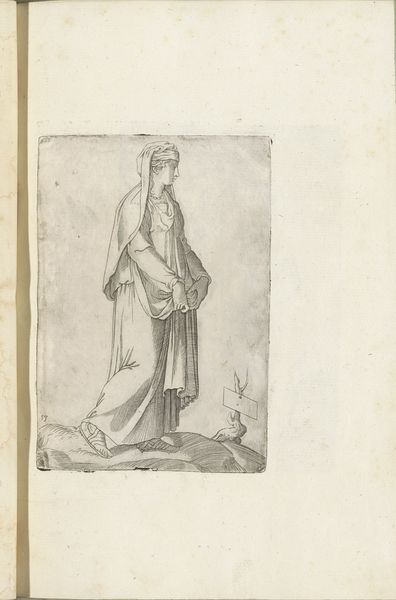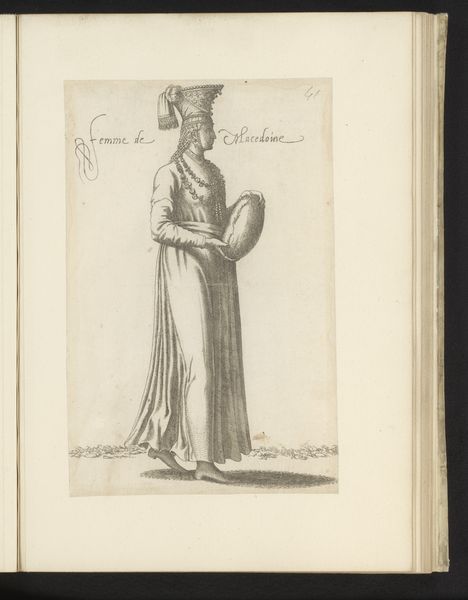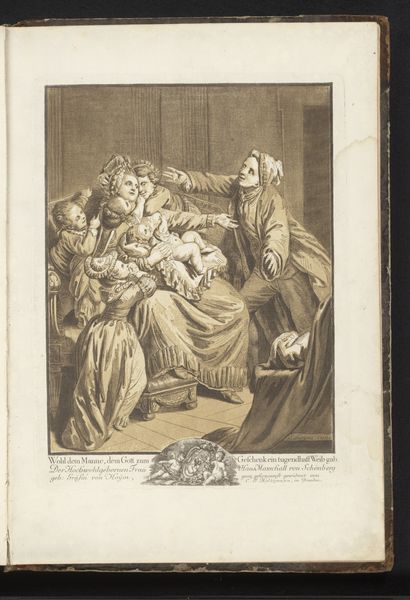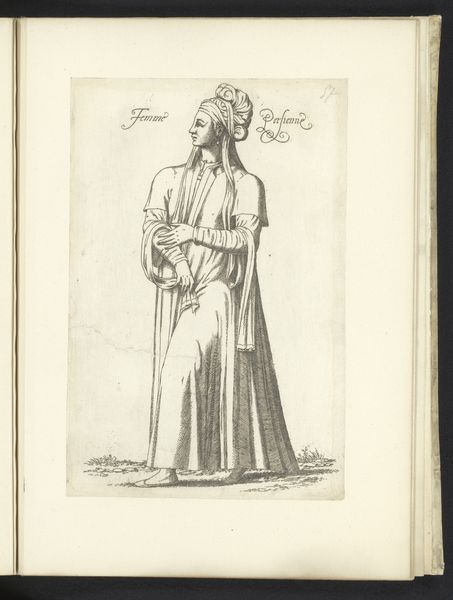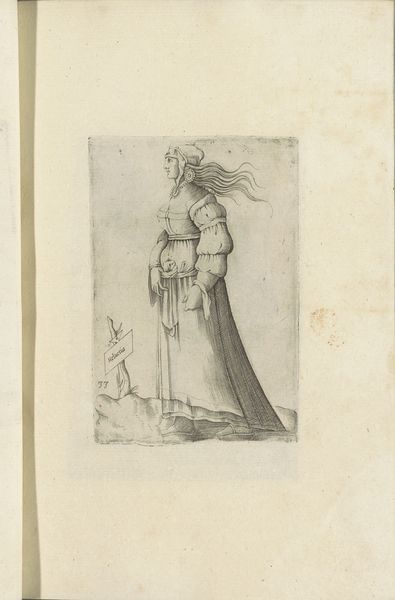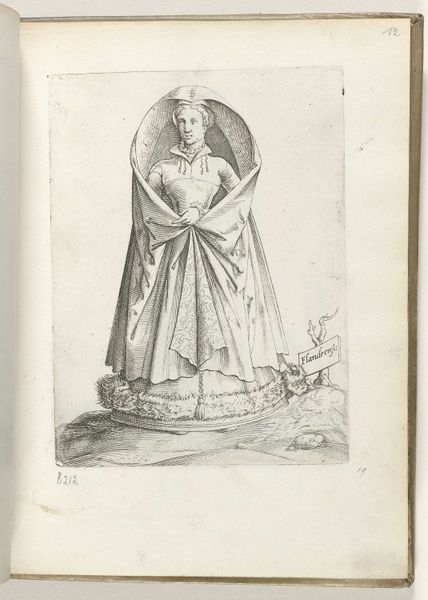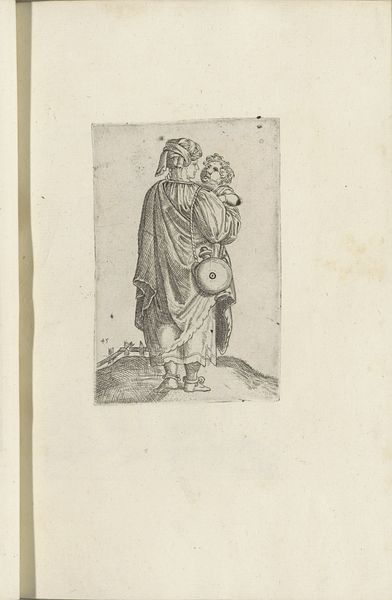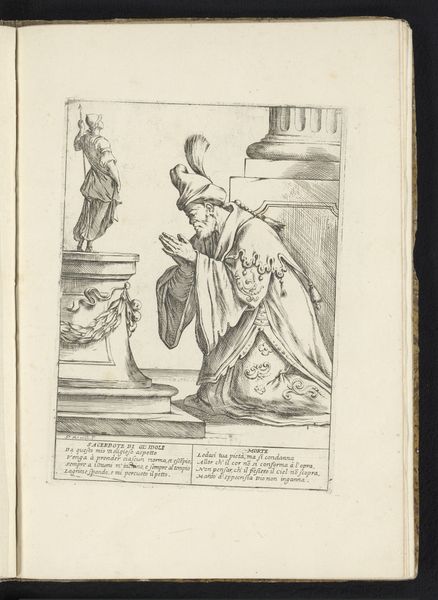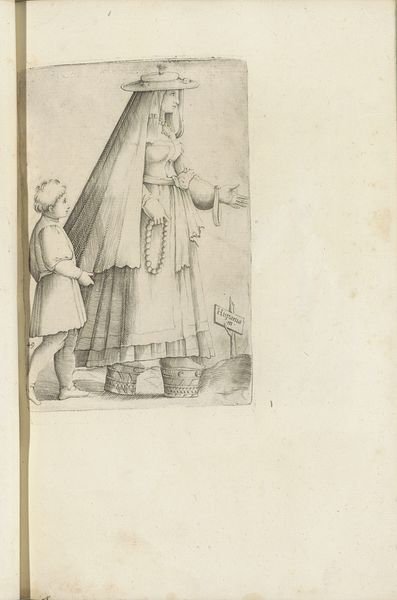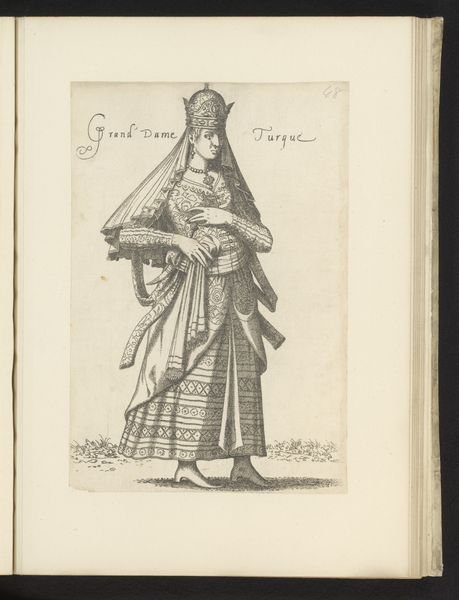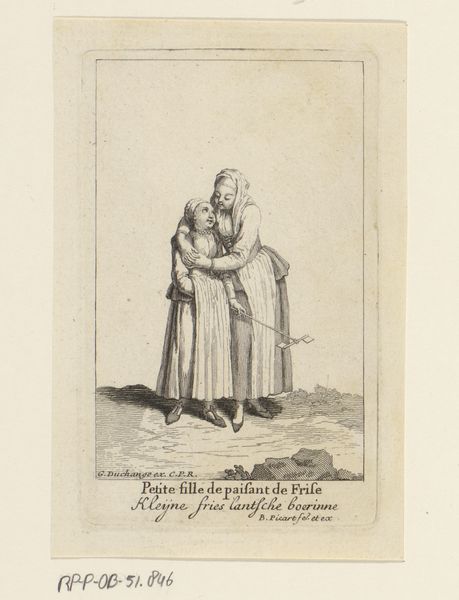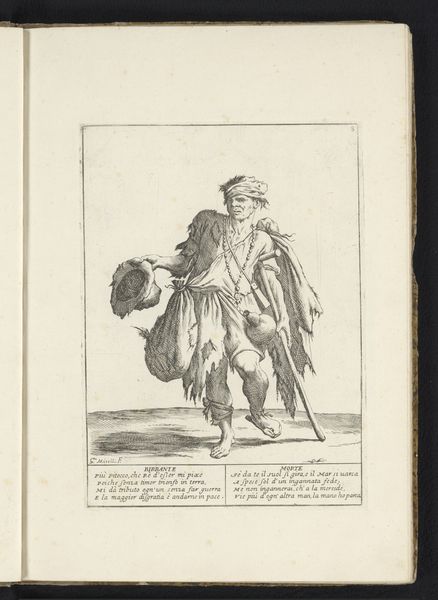
drawing, ink
#
portrait
#
drawing
#
mannerism
#
figuration
#
ink
Dimensions: height 254 mm, width 170 mm
Copyright: Rijks Museum: Open Domain
Curator: Isn't she striking? This is "Vrouw met kind, afkomstig uit Tripoli" or "Woman with child, from Tripoli". It's an ink drawing by Léon Davent, created sometime between 1555 and 1568. Editor: Absolutely. There's a powerful stillness, even solemnity, in her posture and gaze. It's almost like a Madonna, but with an earthiness to it. A very *human* Madonna. Curator: Exactly. Davent captures this moment of intimate care but with a hint of worldly concern in her expression. It carries the gravity of her lived experiences, especially if we see the text which identifies her as from Tripoli. The drawing embodies a lot in that one gaze. Editor: Tripoli was an important center of trade in the Mediterranean. In an image from Europe, I see the symbol of her headdress becoming something different: both protection and social mark. How does Davent see this? Does this work also serve to essentialize her as Other? Curator: That’s a vital point. Given the context of 16th-century Europe and its increasing interactions with other cultures, such depictions were not simply about portraying an individual. Here, Davent blends curiosity and perhaps even a little "orientalism", but with obvious human feeling and attention to the tender relation to the child. He does something complex, I think. Editor: And those bare feet planted in the earth! Again, we return to this essential human condition... to maternity, hardship. The feet signify a kind of stark reality—perhaps even vulnerability, but at the same time, strength. They echo centuries of images connecting humanity to Earth. Curator: It's remarkable how he achieves so much depth of meaning through such economical lines, right? It is, in the end, a rather simple composition. A standing figure, a child cradled. Editor: Well, maybe the apparent simplicity is the key. It makes the gaze, that connection with the viewer, all the more piercing. In her glance, a world. Curator: Agreed. Ultimately, it's about acknowledging that universal experience – the powerful, complex bond between a mother and child – regardless of where she's from. It bridges those cultural distances, doesn't it? Editor: It makes me wonder what other stories we can find woven within the symbols presented to us and reminds us that every portrait reveals a world far beyond its borders.
Comments
No comments
Be the first to comment and join the conversation on the ultimate creative platform.
